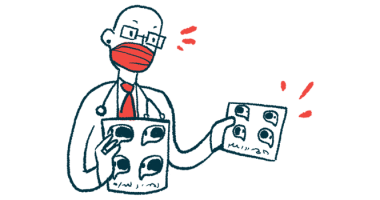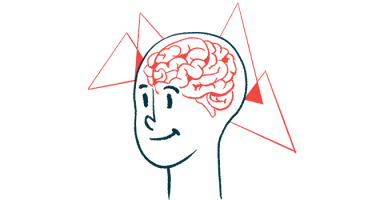Astrocytes May Be Important for Oxytocin’s Role in PWS, Researchers Say
Better understanding mechanisms could lead to new therapeutic strategy

Researchers have determined that the role of the chemical messenger oxytocin in Prader-Willi syndrome could be associated with its function in astrocytes, a type of nerve support cell in the brain.
By counting the number of oxytocin-producing cells and receptors for the molecule in the brain, brain regions and cell types were identified that can now be explored for the development of a new therapeutic strategy for the rare genetic disease.
The finding that oxytocin may play a role in cells other than nerve cells (neurons), “adds another layer of complexity,” but also “could potentially explain some of [oxytocin’s] powerful and long-lasting brain-wide effects,” according to researchers.
A better understanding of oxytocin signaling in astrocytes “could prove critical for therapeutic interventions aiming to ameliorate neuropsychiatric symptoms caused by dysfunctional [oxytocin] signaling,” the team added.
The study, “Analysis of the hypothalamic oxytocin system and oxytocin receptor-expressing astrocytes in a mouse model of Prader-Willi syndrome,” was published in the Journal of Neuroendocrinology.
End goal: a new therapeutic strategy
Dysfunction of the brain’s hypothalamus has long been implicated in PWS. Involved in involuntary functions like sleep, emotional behaviors, and hunger, changes in this brain region are thus thought to underlie hallmark PWS symptoms like excessive hunger, emotional problems, and sleep disorders, among others.
The hypothalamus also is where oxytocin, a hormone involved in the brain’s reward system, is produced. Oxytocin signaling is involved in regulating empathy, and maternal and sexual behaviors, as well as satisfaction from food.
Since the 1990s, a growing body of evidence has suggested that disruptions to oxytocin signaling in the hypothalamus might be involved in PWS.
Specifically, individuals with Prader-Willi have fewer oxytocin-producing nerve cells in that brain region, and may also have alterations to the gene coding for the receptor that it acts on to exert its effects.
Moreover, treatment with oxytocin nasal spray has been found to easedPWS symptoms, including excessive eating and social deficits, in a small clinical trial. Nasal spray approaches of oxytocin forms are in development for PWS. Two key ones are Tonix Pharmaceuticals’ TNX-2900 and Levo Therapeutics’ LV-101.
Yet, information about the oxytocin system in commonly used mouse models of Prader-Willi is lacking, including a knowledge of the specific brain regions and cell types that might be involved.
Now, a team led by researchers in Germany performed a detailed analysis of the oxytocin system in mice genetically engineered to lack Magel2. In PWS patients, multiple paternal genes on chromosome 15 are missing or show defects, one of which is Magel2.
Results showed that oxytocin-producing cells were diminished in a region of the hypothalamus called the caudal paraventricular nucleus in PWS mice compared with healthy (wild-type) mice.
Normally, oxytocin produced in the hypothalamus travels to other brain regions and binds to oxytocin receptors to exert its effects. Activity of the gene coding for these receptors also was at lower levels in PWS mice in a brain region called the nucleus accumbens — a key reward center in the brain — but at higher levels in the central amygdala, involved in processing emotionally relevant information.
While the role of oxytocin in neurons has been extensively studied, the function of the signaling chemical in other cell types hasn’t been well-established.
Interestingly, the researchers found that PWS mice had reduced levels of a marker of astrocytes in the hypothalamus. Moreover, alterations to the number of astrocytes expressing oxytocin receptors were observed.
Specifically, fewer astrocytes in the nucleus accumbens of PWS mice had oxytocin receptors compared with wild-type mice. Also, while astrocytes with these receptors were found in the lateral septum of both wild-type and PWS female mice, no male mice had them.
The lateral septum is involved in a number of PWS-associated behaviors, including feeding and social behavior.
The findings overall suggest that oxytocin “might act on astrocytes within these brain regions to facilitate neuromodulatory and behavioral effects,” the researchers wrote.
They noted that the findings are particularly significant because the effects of oxytocin in the brain have long been attributed to its function in neurons, and not other cell types.
“It is plausible that astrocytic [oxytocin receptors] serve an important, previously unknown function,” the researchers wrote.







